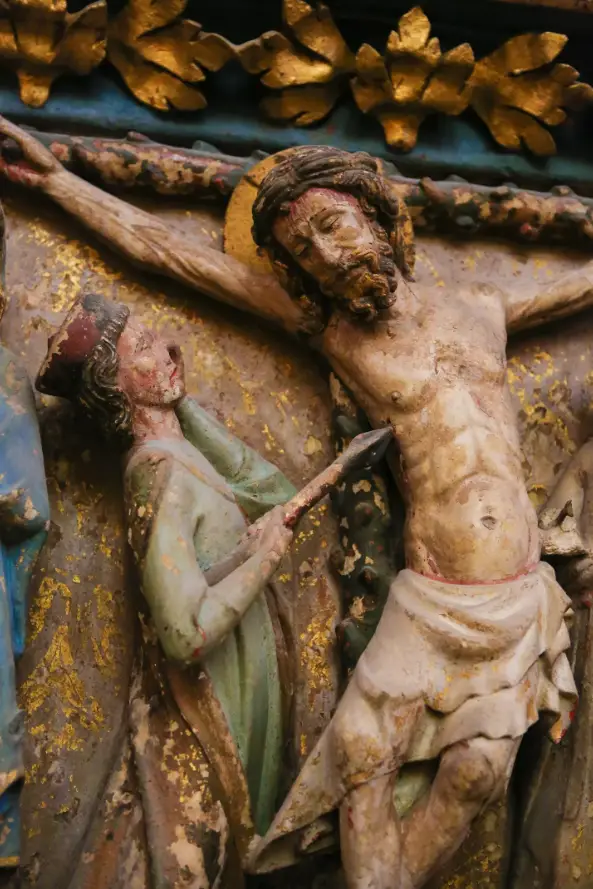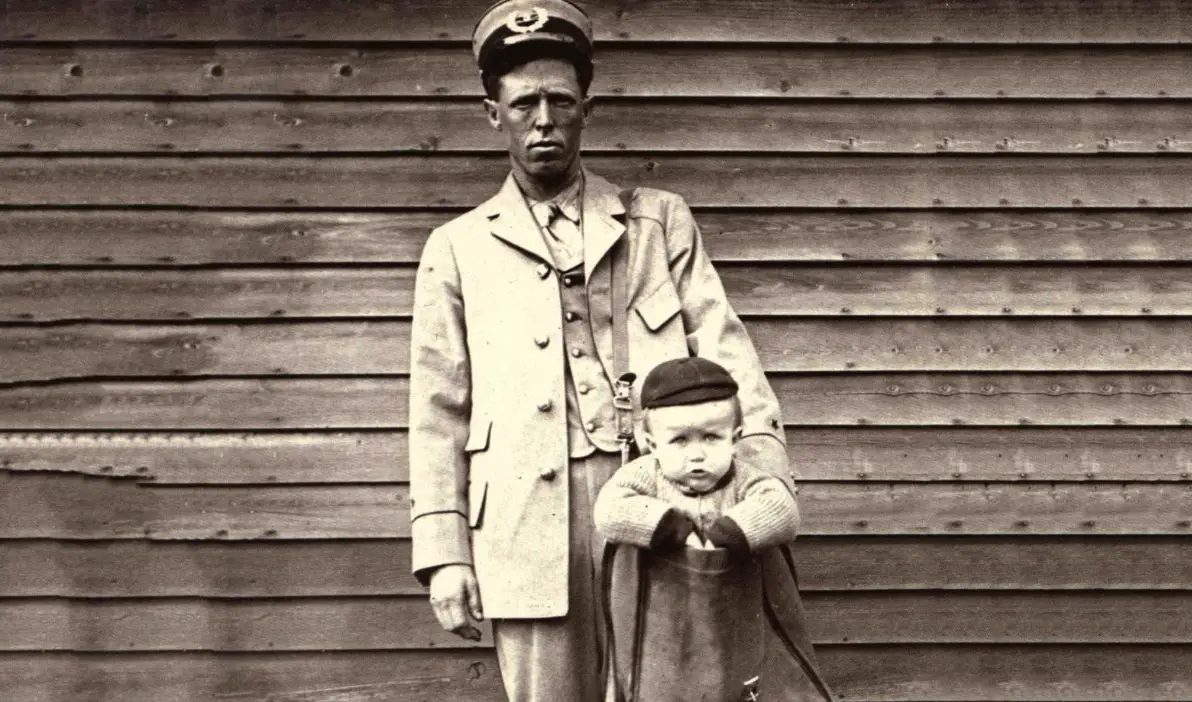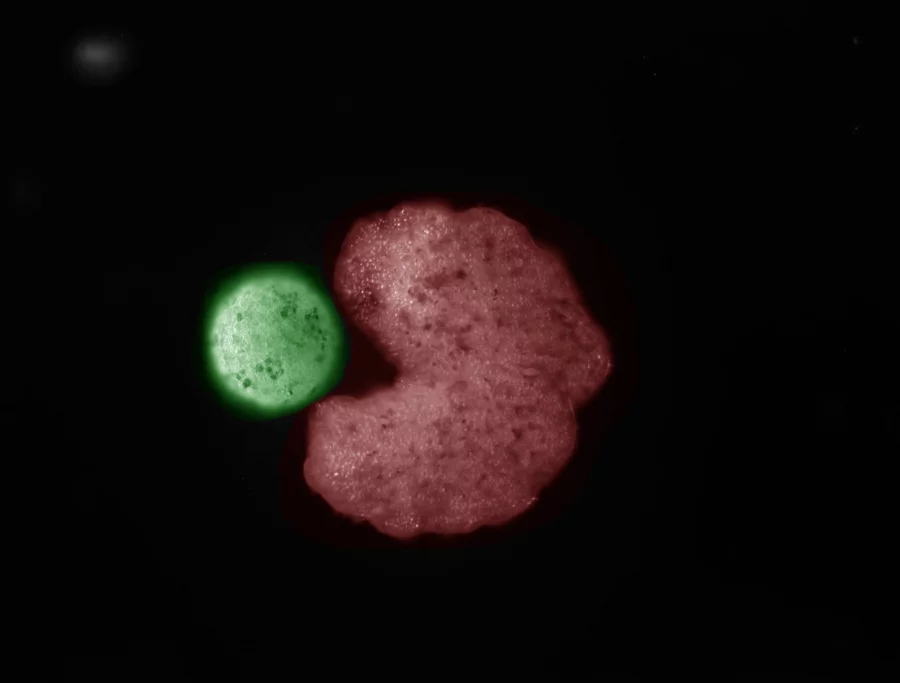Sacred text banned from the Bible ‘reveals’ how Jesus really died, changing everything

Nearly 2,000 years ago, Jesus Christ was crucified, a pivotal event shaping Christian faith.
The Bible tells us he was arrested, tried, and sentenced to death by Roman authorities.
But a lesser-known text, excluded from the Bible, claims to reveal a startling detail: the identity of the soldier who pierced Jesus’ side with a spear.
This text, the Gospel of Nicodemus, names him Longinus. Its account challenges and enriches the traditional narrative of Jesus’ death.

The Crucifixion: What We Know
The New Testament provides a clear account of Jesus’ death. He was crucified on a Friday, now called Good Friday, likely on April 3, AD 33, at around 3 p.m.
This date aligns with historical records and scientific evidence.
NASA notes that Christian texts describe a lunar eclipse after Jesus’ death, when the Moon appeared reddish.
Scholars link this to an eclipse on April 3, AD 33, confirming the timeline.
The Gospel of John describes a Roman soldier piercing Jesus’ side with a spear, causing blood and water to flow out.
This act holds deep theological meaning, symbolizing Jesus’ sacrifice.
Yet, the soldier’s identity remains anonymous in the canonical Gospels. The Gospel of Nicodemus steps in to fill this gap.
The Gospel of Nicodemus: An Ancient Mystery
The Gospel of Nicodemus, also called the Acts of Pilate, is an apocryphal text, meaning it’s not part of the Bible’s official canon.
It claims to record events of Jesus’ trial, crucifixion, and resurrection, attributed to Nicodemus, a Pharisee who assisted in Jesus’ burial.
This late date raises questions about its reliability. The text may reflect later Christian beliefs rather than eyewitness accounts.
It includes details absent from the Bible, such as the names of the two criminals crucified with Jesus, Dismas and Gestas, and the soldier Longinus.
These additions make it a fascinating but controversial document.

Longinus: The Soldier’s Story
The Gospel of Nicodemus identifies the soldier who pierced Jesus’ side as Longinus, a Roman centurion.
It describes him thrusting a spear into Jesus, mirroring John 19:34, where blood and water poured out.
The text suggests Longinus witnessed supernatural events—an earthquake and darkness—after Jesus’ death.
In Matthew 27:54, a centurion declares, “Truly this was the Son of God!”. Tradition links this to Longinus.
Some accounts claim Longinus converted to Christianity, moved by these events.
Legends, not found in the Gospel of Nicodemus, suggest the blood and water cured his blindness.
While no historical evidence confirms his existence, his story has left a mark.
The Eastern Orthodox Church venerates him as a saint, and a statue of Longinus stands in Saint Peter’s Basilica, Vatican City.
| Aspect | Canonical Gospels | Gospel of Nicodemus |
|---|---|---|
| Soldier’s Name | Unnamed | Longinus |
| Piercing of Jesus’ Side | Blood and water flow out (John 19:34) | Blood and water flow out, Longinus named |
| Conversion | Centurion’s declaration (Matthew 27:54) | Longinus converts to Christianity |
| Historical Evidence | No specific individual identified | No physical evidence, based on tradition |
Why Was It Excluded?
The Gospel of Nicodemus was never canonized, likely due to its late authorship.
Early Church leaders, forming the Bible’s canon in the 4th century, prioritized texts written closer to Jesus’ time by apostles or their associates.
The Gospel of Nicodemus, written centuries later, didn’t meet this standard.
Some scholars suggest its content also played a role. The text’s additional details, like naming Longinus, may have been seen as speculative or theologically inconsistent.
It also contains elements reflecting later Christian or Gnostic influences, which diverged from orthodox teachings.
Despite its exclusion, it influenced Christian art, literature, and relics, such as the Holy Lance associated with Longinus.

Historical and Theological Impact
The Gospel of Nicodemus doesn’t change the core events of Jesus’ crucifixion but adds a human dimension.
Longinus’ story illustrates how even a Roman soldier, complicit in Jesus’ death, could be transformed by faith.
This resonates with Christian themes of redemption and grace. For believers, it underscores the universal impact of Jesus’ sacrifice.
Scholars, however, approach the text cautiously. Its late date and lack of corroborating evidence make it more a product of early Christian storytelling than a historical record.
The naming of Longinus and other figures may have served to address narrative gaps or inspire devotion.
Still, it offers insight into how early Christians expanded Jesus’ story.
The text also highlights the diversity of early Christian writings. Many apocryphal texts, like the Gospel of Nicodemus, were widely read but excluded from the canon.
They reveal the rich, varied ways early Christians interpreted their faith.
A Lasting Legacy
The Gospel of Nicodemus remains a window into early Christian thought.
Its account of Longinus, whether factual or legendary, has shaped art, literature, and devotion.
The Holy Lance, believed to be the spear used by Longinus, is a revered relic, though its authenticity is debated.
Renaissance paintings and sculptures often depict Longinus, cementing his place in Christian iconography.
For historians, the text is a valuable artifact, showing how stories evolved to meet the needs of growing Christian communities.
For believers, Longinus’ transformation is a powerful reminder of faith’s potential to change lives, even in the shadow of the cross.
The Gospel of Nicodemus, though not part of the Bible, offers a compelling perspective on Jesus’ death.
By naming Longinus as the soldier who pierced Jesus’ side, it adds a personal layer to a divine event.
While its historical accuracy is uncertain, its influence on Christian tradition is undeniable.
Longinus, real or not, embodies the transformative power of faith, a message that continues to resonate nearly 2,000 years later.


































